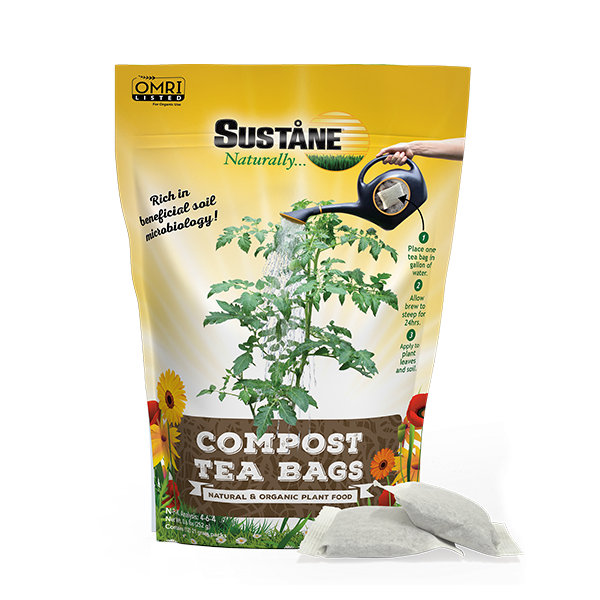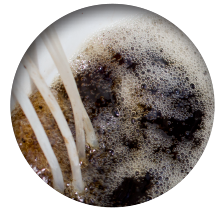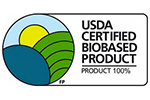
Suståne® Compost Tea Bags
Why compost teas?
There are multiple benefits to using compost teas. More than supplementary nutrients, composts teas deliver humic substances that can act as biostimulants and active microorganisms that can contribute to nutrient cycling and the ecology of a healthy soil.
Sustane Compost Tea Bags can be applied as a brewed liquid using watering cans or applied directly to the root zone as a root zone feeder pack.
Many reports indicate that compost teas increase plant tolerance to biotic and abiotic stresses, reducing the need for other inputs.
Make an enriched compost tea for superior results. Suståne’s Compost Tea Bags have been proven to support improved plant growth. Once brewed, it blends well with Suståne’s Hi-N 12-0-1 WDF (Water Dispersible Fertilizer) to make an enriched compost tea with superior characteristics!
- Adds a well-balanced mix of plant essential nutrients, humates, and beneficial microorganisms
- Easy to use liquid organic fertilizer supplement: no fuss, no mess, no measuring
- Beneficial microbes in the tea convert nutrients to plant available forms when added to soils and can help protect plants from pests and pathogens
- Increases yields when applied to soils, particularly under hot and dry conditions
Compost Tea is simple to prepare. Add one 21 gram tea bag per gallon of water, aerate and steep for 24 to 48 hours at 60°- 85° F (10° - 25° C).
 Aeration during the brewing process increases the level of active microorganisms in the Compost Tea
Aeration during the brewing process increases the level of active microorganisms in the Compost Tea
Also contains non-plant food ingredients:
Contains 50,000 Colony Forming Units (CFU’s) per gram of the following species:
Bacillus amyloliquefaciens.........................................10,000 CFU’s per gram
Bacillus subtilis..........................................................10,000 CFU’s per gram
Bacillus pumilus.........................................................10,000 CFU’s per gram
Bacillus licheniformis.................................................10,000 CFU’s per gram
Bacillus megaterium................................................. 10,000 CFU’s per gram
|
Item #
Suståne
COMPOST TEA |
Units / Case
|
Package Size
|
Units / Pallets
|
|
80-20-2005
|
10 / case |
12 ct pouch
21 g bags |
40 cases / pallet
|
Guaranteed Analysis
| Total Nitrogen (N) | 3% |
|
0.3% Ammoniacal Nitrogen
0.3% Other Water Soluble Nitrogen
2.4% Water Insoluble Nitrogen*
|
|
| Available Phosphate (P2O5) | 6% |
| Soluble Potash (K2O) | 3% |
| Calcium (Ca) | 4% |
| Magnesium (Mg) | 1% |
| Sulfur (S) | 1% |
| Iron (Fe) | 0.5% |
Derived from aerobically composted turkey litter.
*2.4% slowly available nitrogen from aerobically composted turkey litter.


